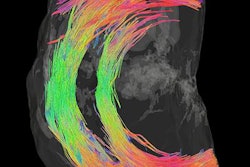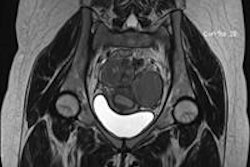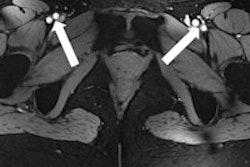
An investigation of quality management for abdominal and pelvic MRI scans in Saudi Arabia and the Republic of Ireland has shown that staffing issues, variable adherence to local rules and procedures, and lack of policies governing work practices contribute to major fluctuations in clinical practice.
"Saudi radiographers are less confident in their knowledge and practice of abdominal and pelvic MR imaging in comparison with radiographers practicing in Ireland," stated Shrooq Al Dahery and colleagues from the School of Medicine, University College Dublin. "Irish radiographers were more enthusiastic to engage in CPD (continuing professional development) than Saudi radiographers; however, the Irish group identified financial support as a barrier to participation in MR courses."
The authors sought to identify the current knowledge of MRI professionals regarding image quality management and confidence to modify sequences and sequence parameter selections to acquire optimal image quality for patients referred for MRI exams. Their aim was to find appropriate strategies to address any identified challenges and opportunities.
The group was concerned that variations in the quality of images produced in different institutions and countries may occur due to disparities in equipment, scan parameters, and different levels of radiographers' MRI training.
"It is important to ensure that all medical images produced are consistent and include sufficient quality to answer the diagnostic question," they told delegates at the 2017 U.K. Radiological Congress (UKRC), held in Manchester. "Therefore, an understanding of existing knowledge of the operators was essential with respect to protocol enhancement."
They conducted 87 interviews with chief radiographers, radiographers, and radiologists at 10 public, semipublic, and private hospitals in the western region of Saudi Arabia and at 12 Irish hospitals. The questions focused on the radiographer's and radiologist's professional role in the two countries, how they dealt with image quality issues, perceived personal development in MRI, and what they viewed as required regarding image quality training to support their work.
Further technical training and establishment of hospital protocols are needed to improve radiographers' knowledge and practice, and radiographers need to receive adequate training about MRI technology and procedures to ensure consistent, high quality medical images are produced, they stressed.
Pelvic tumor recurrence
In another presentation at UKRC 2017, a group from King Abdulaziz Medical City, King Khalid National Guard Hospital in Jeddah, Saudi Arabia, addressed MRI assessment of pelvic tumor recurrence.
"Diagnostic challenges may arise during the detection of recurrent disease because symptoms may be nonspecific," explained lead author Dr. Yasmeen Zaki and colleagues. "MRI is pivotal in detecting and characterizing recurrent tumor location, size, extent, and nodal involvement."
After treatment of cervical carcinoma, disease recurrence occurs in around a third of patients, and most of these cases are within the first two years of the initial therapy. Recurrence is most likely to occur in the pelvis. Studies show that T2-weighted imaging has a high sensitivity (90% to 91%) for tumor recurrence, but a low specificity, and the addition of dynamic contrast-enhanced (DCE) MRI improves specificity from between 22% and 38% to 67%, they noted.
Similarities exist between radiation-induced fibrosis and recurrence, and recent studies show that DCE MRI can be of great use in distinguishing recurrent disease from radiation-induced fibrosis, with accuracies of between 82% and 83%, according to Zaki and colleagues.
"Sixty to 70% of patients with ovarian carcinoma will have a relapse and probably die due to the disease. Studies showed that DCE-MRI had a sensitivity of 90% and specificity of 88% for detecting recurrence compared to laparotomy," they pointed out. "Endometrial carcinoma has a low recurrence rate of 4% to 16%."
Pelvic recurrence occurs in around 4% to 8% of rectal carcinoma patients after surgery, with most cases being seen in the first three years after treatment. MRI has a sensitivity of 80% to 90% and specificity of up to 100%, but accuracy falls after surgery and chemoradiotherapy because the tumor may be confused with fibrosis, the authors added. The addition of diffusion-weighted imaging (DWI) to T2-weighted imaging can increase sensitivity from 47% to 72%.
Overall, using multiple sequences, including T2-weighted imaging, DWI, and DCE acquisitions greatly increase diagnostic accuracy, they concluded.



















